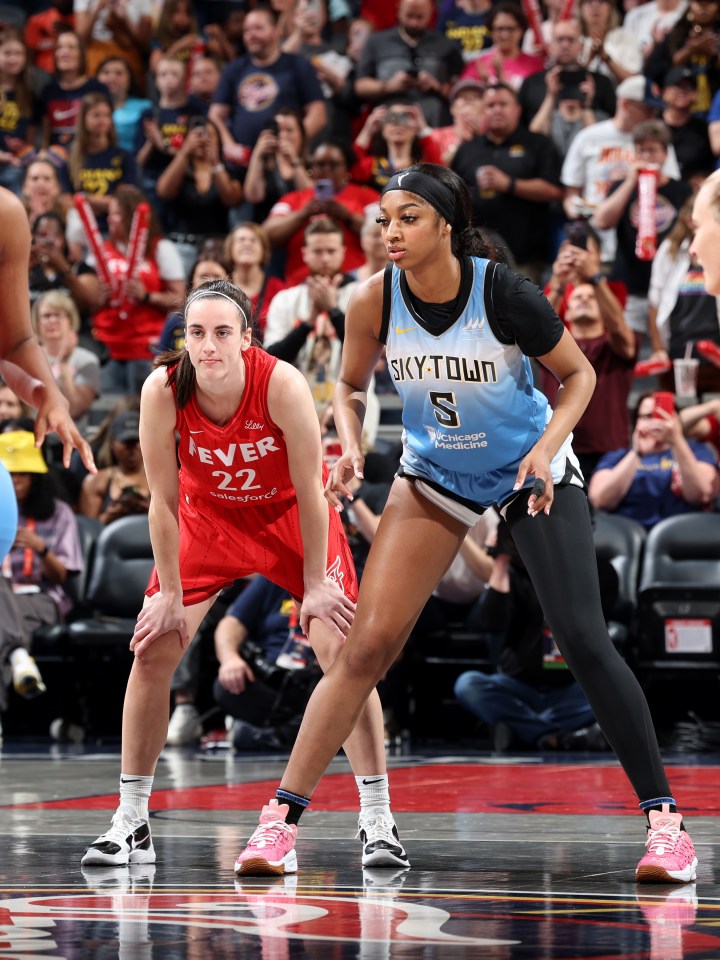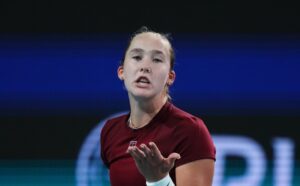A potentially game-changing development has gone down in the WNBA.
The league’s players formally announced Monday that they are opting out of the Collective Bargaining Agreement (CBA) — a legally binding contract between the WNBA and the Women’s National Basketball Players Association (WNBPA) that outlines the terms and conditions of player contracts, trades, revenue distribution, and more.
Clark and Reese are two of the biggest things to happen to the WNBA in yearsGetty
While the decision was widely expected, it marks the latest domino to fall in the leveling up of women’s professional basketball.
The WNBPA — a trade union for the W’s players — had until November 1 to opt out of the current CBA but decided to make the announcement early and capitalize on the momentum of the recently concluded 2024 WNBA Finals.
The current CBA was agreed in 2020 and was set to expire after the 2027 season. However, it is now set to end October 31, 2025, meaning the league and players’ union have less than one year to strike terms in order to avoid a league-wide lockout.
A number of things will be on the agenda for the WNBPA as they renegotiate the terms of their employment, including player salaries.
In a statement, the WNBPA said it’s seeking an economic model that changes the current system by using an “equity-based” model that grows with the league as its business improves.
While the league will reportedly lose around $40 million this season, the WNBA recently announced a new 11-year media rights deal featuring partnerships with Disney, Amazon Prime Video and NBCUniversal — valued at about $2.2 billion, or $200 million per year, a $140 million increase from its current deal.
This highly lucrative TV deal will bring an unprecedented influx of wealth into the league, and the WNBPA wants player salaries and bonuses to correlate with the league’s growing financial might.
Salaries have been a contentious issue for years, with superstar rookie Angel Reese recently claiming that her four-year rookie contract totalling $324,383 ($73,439 per year) isn’t enough to cover her rent.
Equally, Caitlin Clark, one of the biggest athletes in the country right now, made just $76,535 in 2024, the first-year total of her $338,056 four-year rookie deal as the first overall pick for the Indiana Fever.
Clark is the biggest thing in women’s sports but isn’t being paid like itGetty
Angel Reese is also making her mark in the WNBAGetty
Previously, the WNBA has been reported to bring in roughly $200 million in revenue per year, with about 9 percent of that going to player base salaries.
At present the salary cap set at $1.46 million per team, with negotiations widely expected to challenge this restrictive cap and ultimately transform player salaries.
The WNBPA is likely to propose fresh salary teams under the new CBA, similar to the NBA with its salary cap, which is pegged to league revenues.
NBA players receive a 50-50 split of all revenue. Last year, WNBA players only received around 20 percent of revenue shares.
Under the current CBA, WNBA players only receive a 50-50 split of incremental revenue, not all revenue, meaning the money made by the league beyond a target goal.
This effectively becomes a much lower share than the men receive.
As such, the players’ union is expected to campaign for a 50 percent overall split of revenues, which also includes ticket sales, merchandise and media rights.
The new CBA will impact every player, including stars like Breanna Stewart and A’ja WilsonGetty
That 50-50 distribution would see the W’s players enjoy the same percentage split of revenue as all of the NBA’s top stars, from LeBron James to Steph Curry and Kevin Durant.
Crucially, the WNBA’s players aren’t advocating for the same pay as their NBA counterparts.
Las Vegas Aces star Kelsey Plum recently said the idea that the WNBA players want to get paid the same amount as NBA players is a “huge misconception.”
“We’re not asking to get paid what the men get paid,” Plum said.
“We’re asking to get paid the same percentage of revenue shared.”
Plum thinks it’s only fair the WNBA’s players get a 50-50 split of the league’s revenuesGetty
The NBA’s players get an equal share of the league’s revenues – and the WNBA wants the sameGetty
“In the NBA, they have percentages of revenue shared for the players — so, jersey sales, obviously their TV contracts.
“But that’s because their CBA negotiates, where the owners are making certain types of money, [the players] get that as well. In the WNBA, that’s not the case.”
“I don’t think I should get paid the same as LeBron,” Plum went on.
“But the percentage of revenue — like for example: they sell my jersey in Mandalay Bay, I don’t get a dime. So that’s the stuff we’re talking about.”
Both parties now have a year to figure out how to proceed. It’s unclear what the WNBA wants from their side, and there’s no guarantee the players will get an equal portion of the league’s revenue.
However, the WNBA has never lost games to a labor dispute, and it’s widely expected that a resolution that satisfies both sides will be achieved.
If the current crop of players are seeking comfort heading into renegotiations, they only only have to look at the previous CBA to be optimistic that their salaries will increase under a prospective new agreement.
The WNBPA opted out of the previous CBA in 2018 and reached the current agreement in 2020.
Salaries increased across the board under the new CBA, with the average annual player compensation surpassing six figures for the very first time in league history.
If that precedent is anything to go by, the likes of Clark, Reese, and many of the WNBA’s other top stars can expect their on-court earnings to reach all-time highs, whenever the terms of the new CBA are eventually agreed upon.



